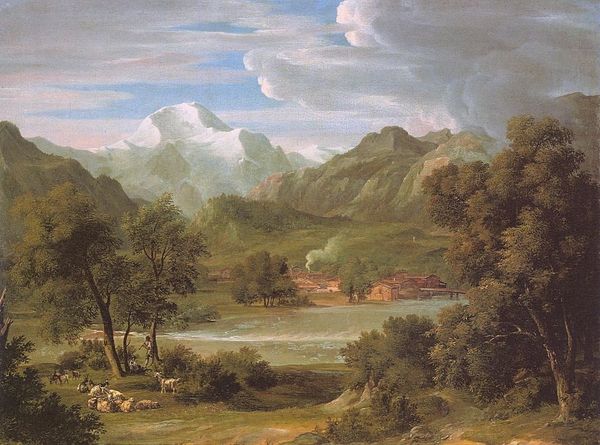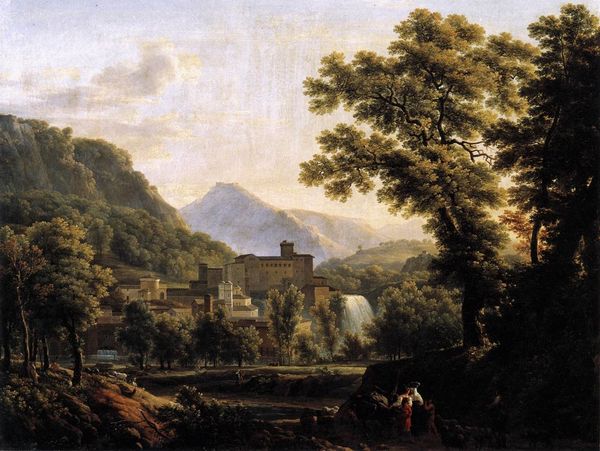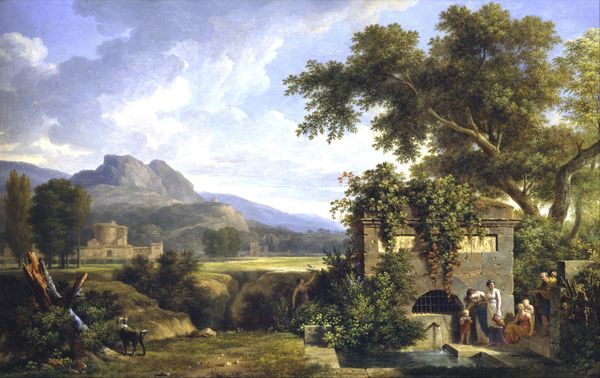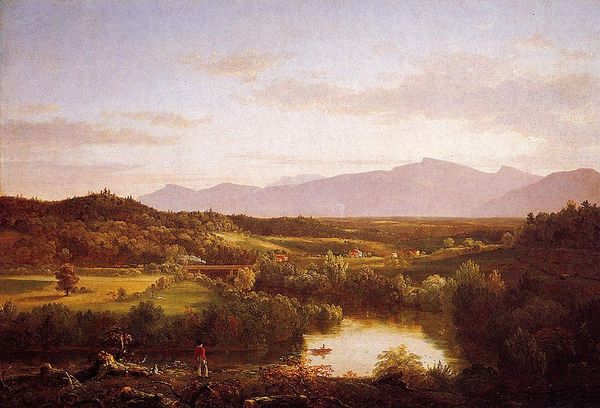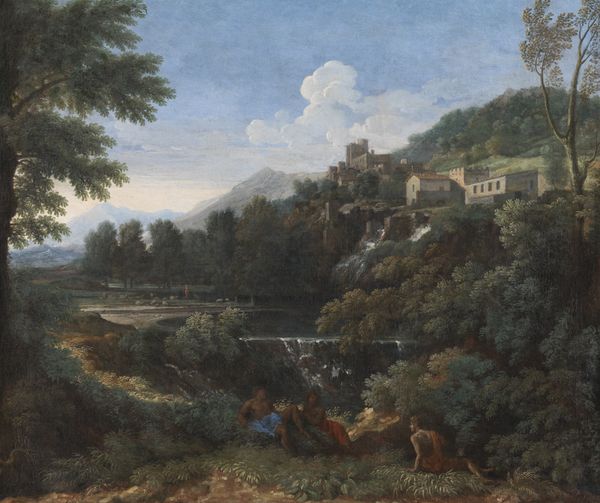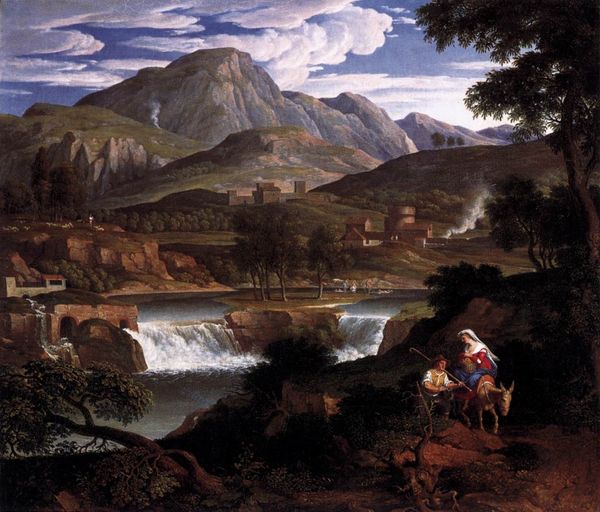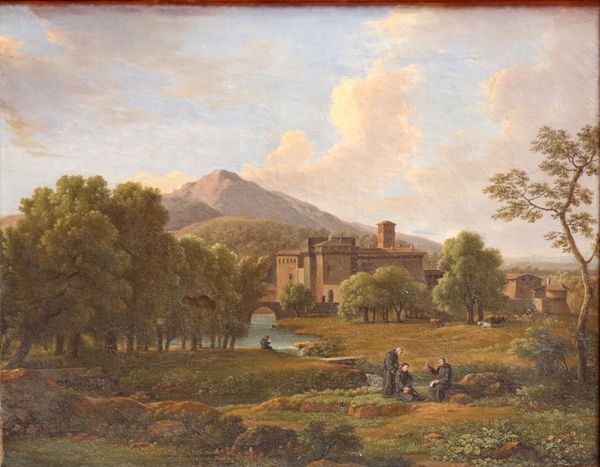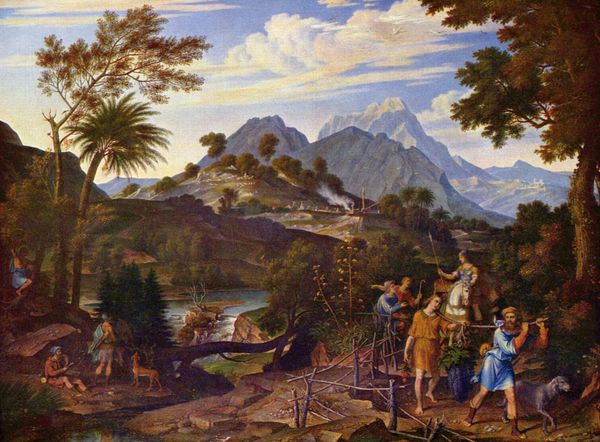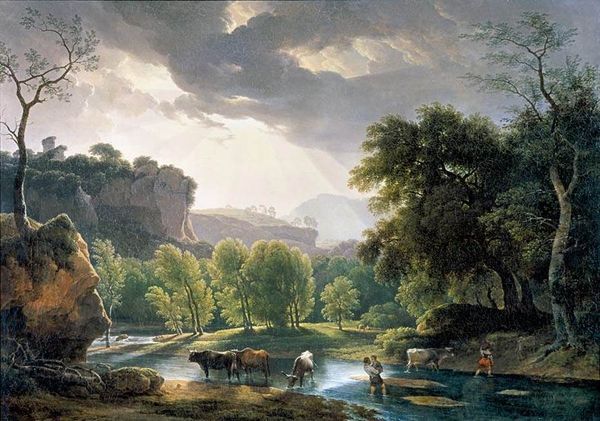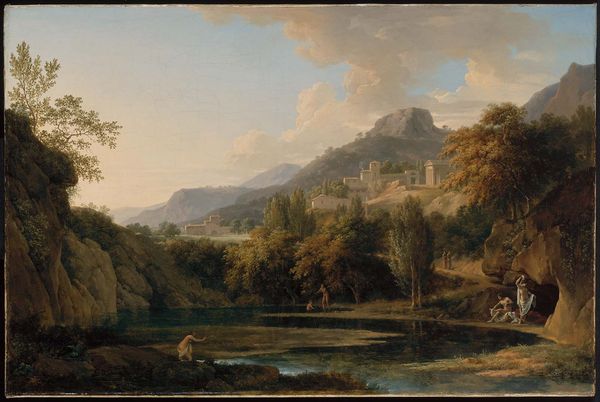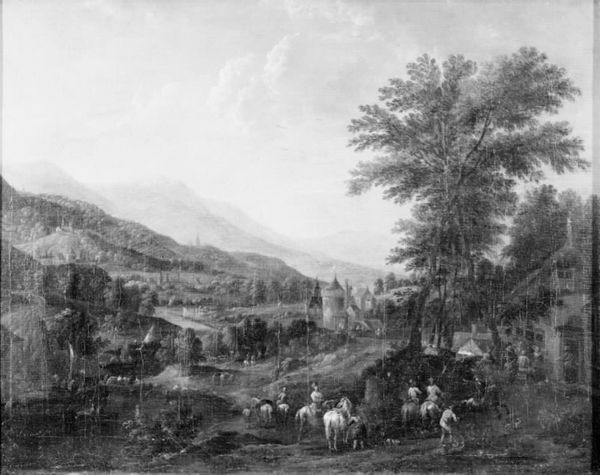
painting, oil-paint
#
neoclacissism
#
rural-area
#
painting
#
oil-paint
#
landscape
#
oil painting
#
romanticism
#
genre-painting
#
history-painting
Copyright: Public domain
Joseph Anton Koch painted "Das Franziskuskloster in Den Sabiner Bergen" probably in the first decades of the 19th century, with oil on canvas. Koch’s painting invites us to consider the public role of art and the social conditions that shape artistic production. Here we have an idealized vision of the Sabine Hills, near Rome, Italy. Koch's focus on the monastery raises questions about the relationship between religious institutions and the natural landscape. The image is not just a picturesque scene; it's a commentary on the social structures of the time, particularly the role of the Catholic Church in Italian society. By depicting monks in harmony with nature, Koch perhaps implies a critique of the urban, industrializing world. The painting's formal elements, like the balanced composition and subdued colors, reinforce this sense of order and stability. To truly understand this work, we need to consider the historical context in which it was made. Research into the Catholic Church, its relationship to the Italian landscape, and Koch's artistic influences can provide a deeper understanding of this painting's meaning and significance.
Comments
No comments
Be the first to comment and join the conversation on the ultimate creative platform.
